Effective Lesson Design and Backwards Design - EDU650 Presentation
VerifiedAdded on 2023/06/03
|15
|1103
|376
Presentation
AI Summary
This presentation provides an overview of effective lesson design and the backwards design model, emphasizing the importance of clear learning objectives and alignment with Common Core standards. It highlights key elements of effective lesson design, including clear objectives, active background knowledge, student practice, and a closing formula. The presentation contrasts backwards design with the traditional model, illustrating how backwards design starts with desired outcomes and assessment before planning learning activities. It also includes a backwards design activity example for English literature, covering goals, assessment evidence, and learning activities. Common pitfalls in lesson planning, such as ambiguous objectives and trying to achieve too much in a single lesson, are discussed along with strategies to avoid them. This presentation aims to provide educators with practical insights into designing effective and engaging lessons that meet curriculum standards and promote student learning. Desklib provides solved assignments and past papers for students.
1 out of 15
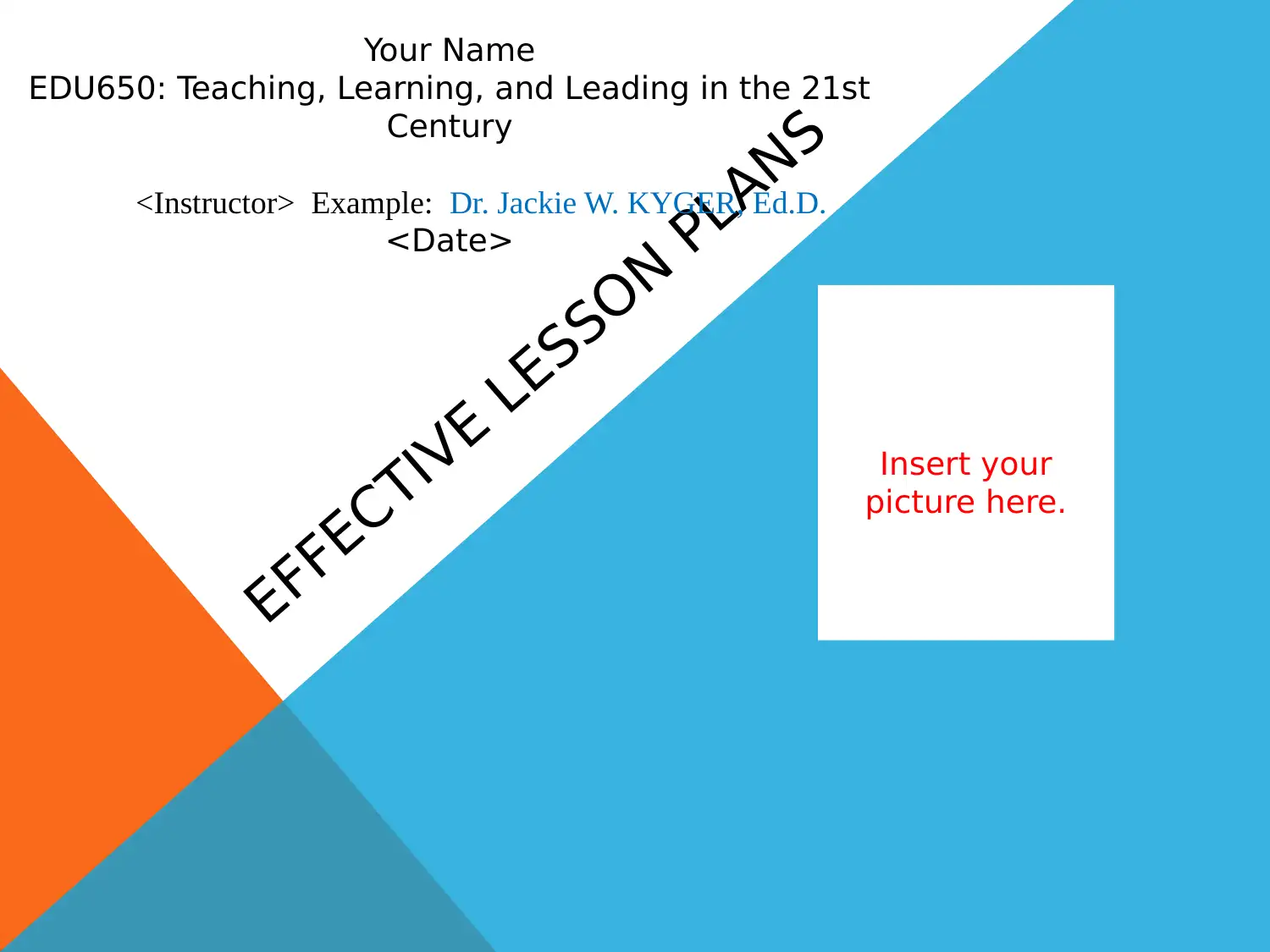
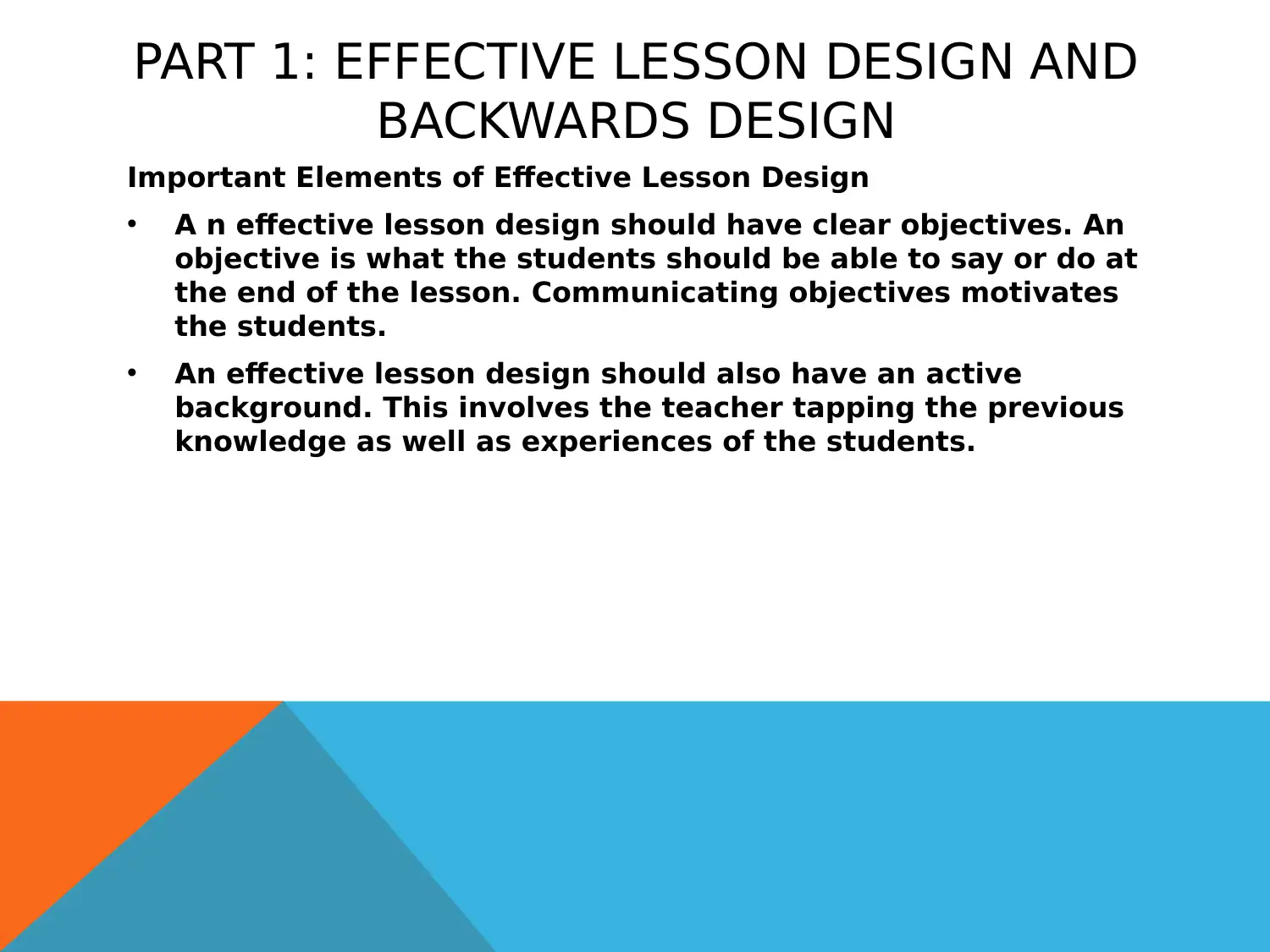





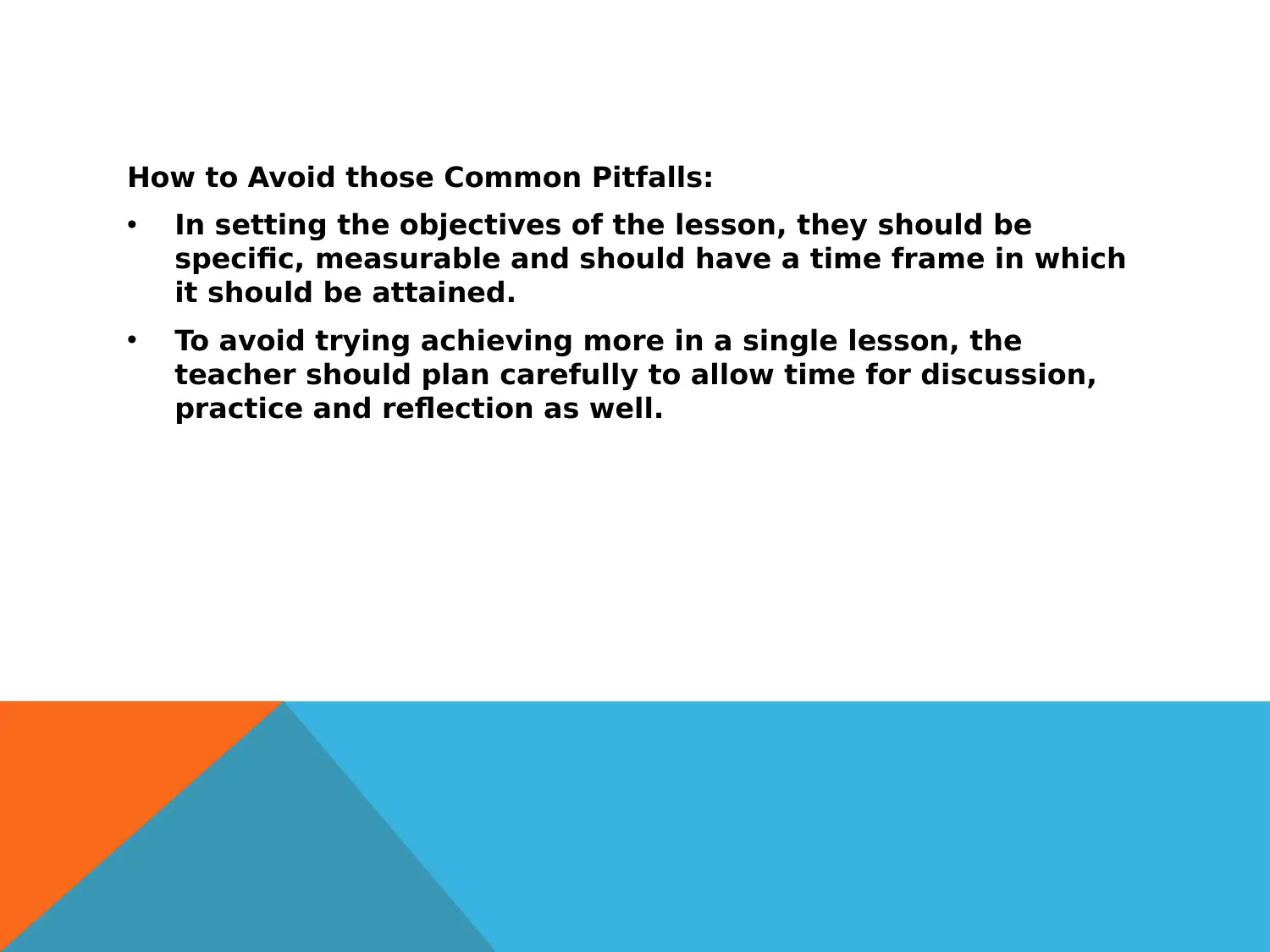
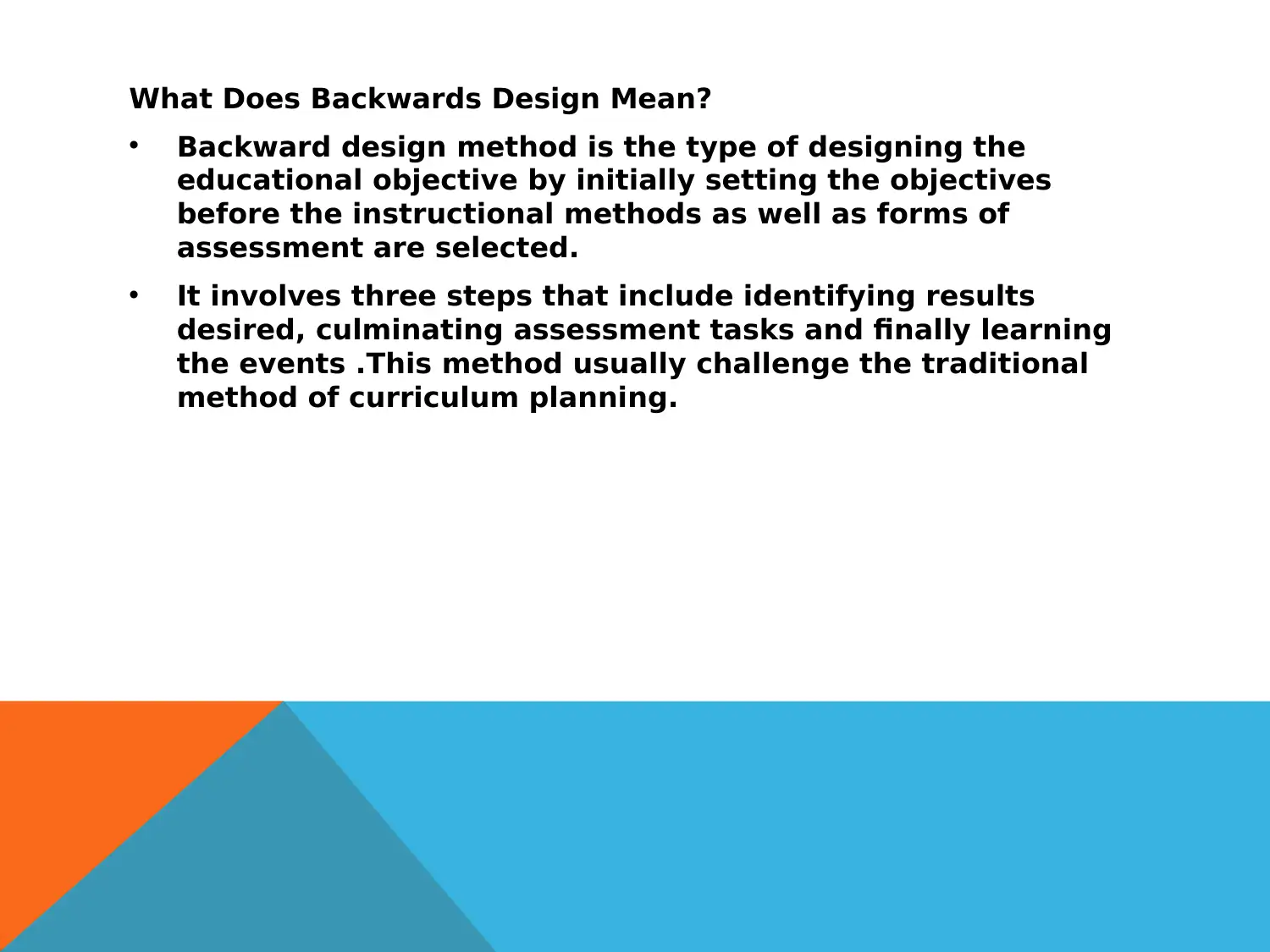

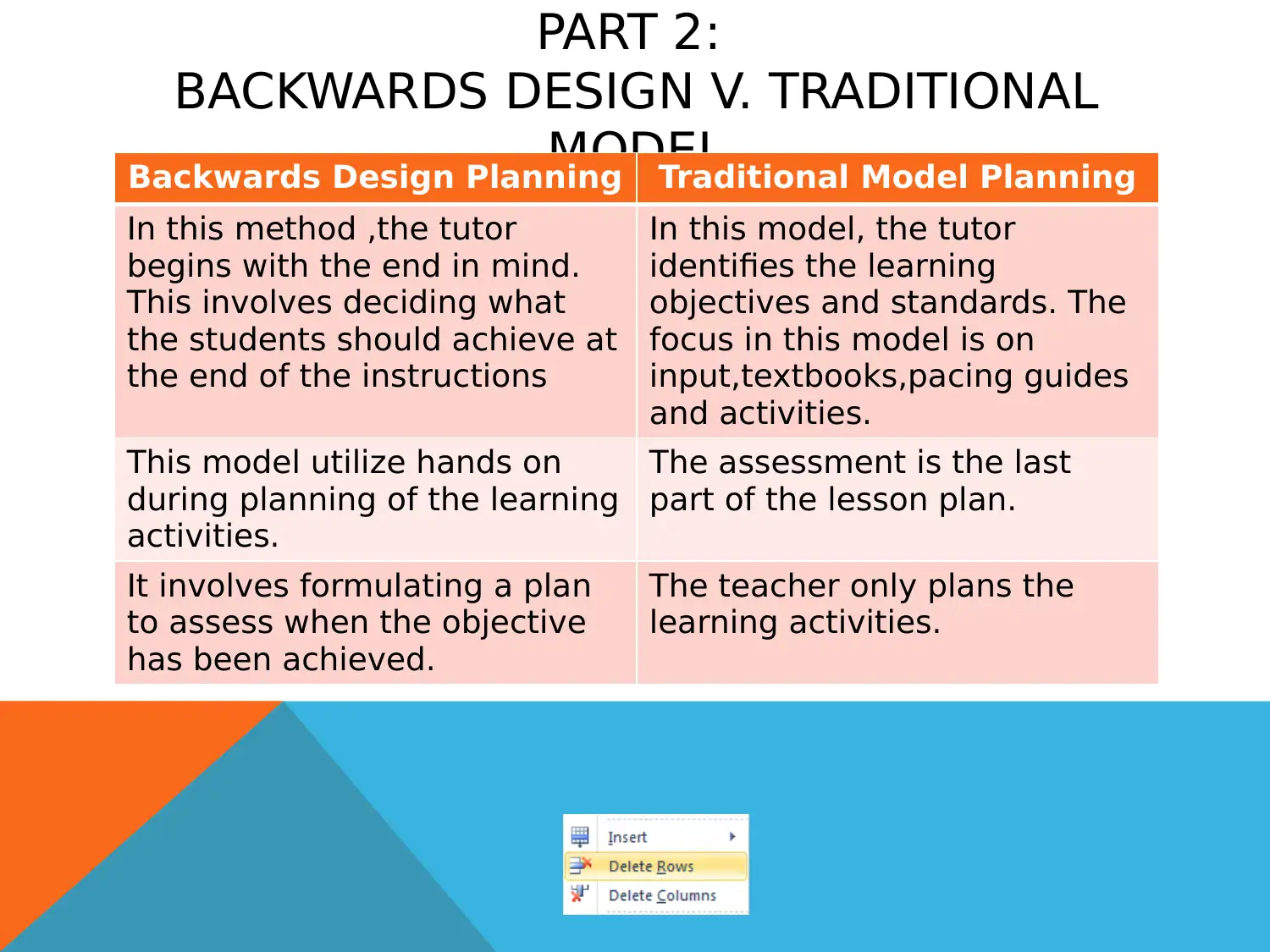
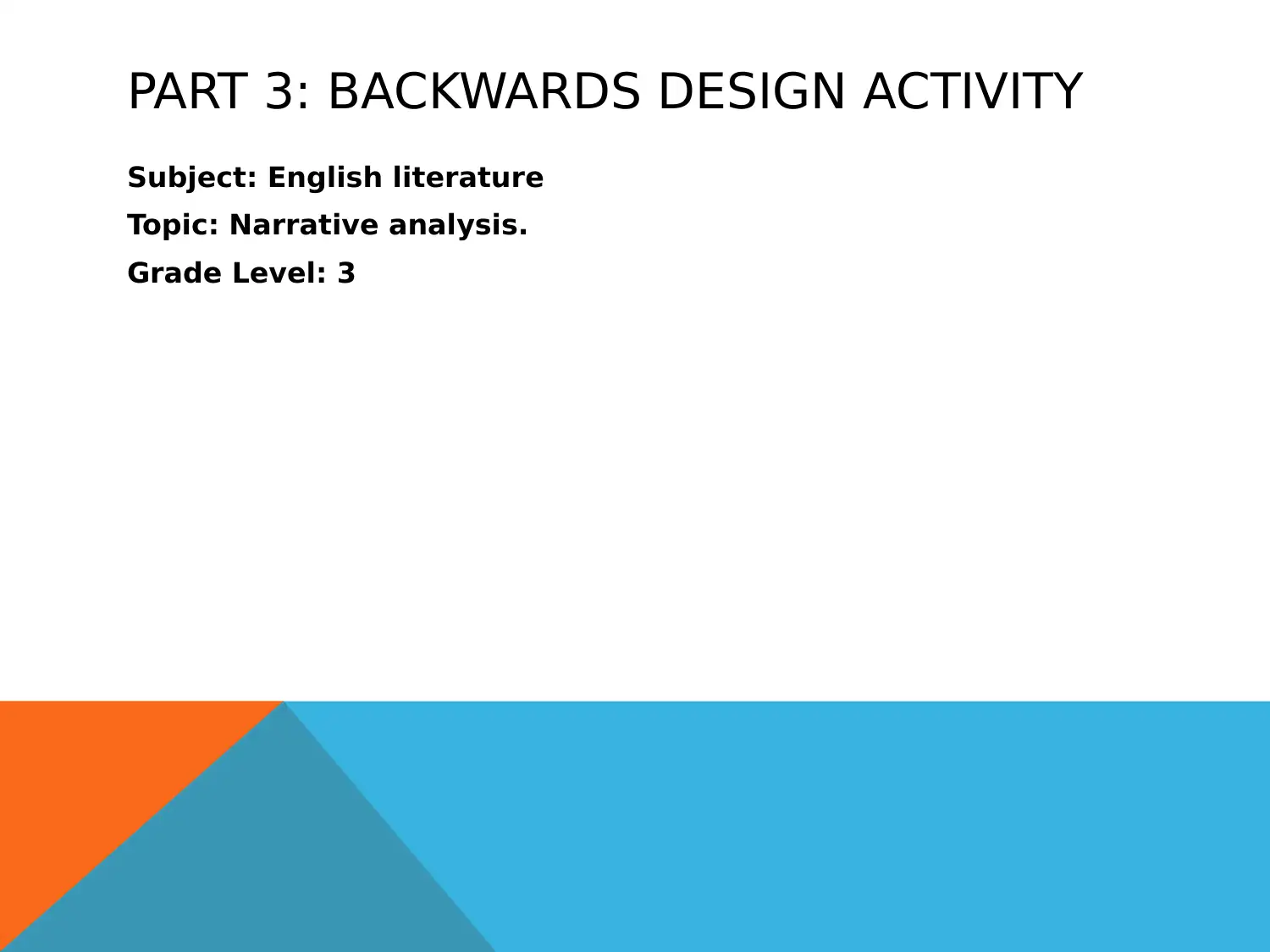
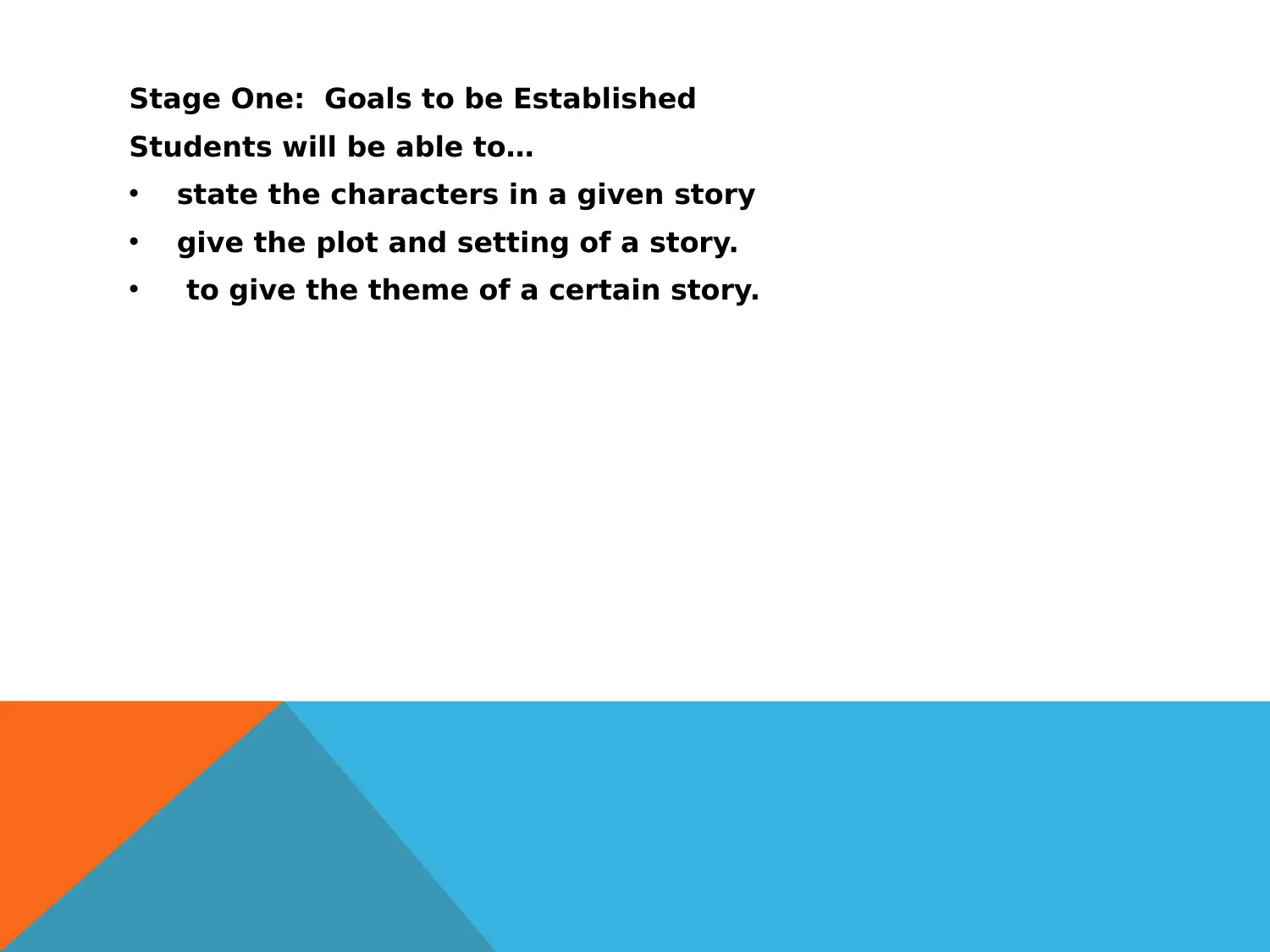





![[object Object]](/_next/static/media/star-bottom.7253800d.svg)